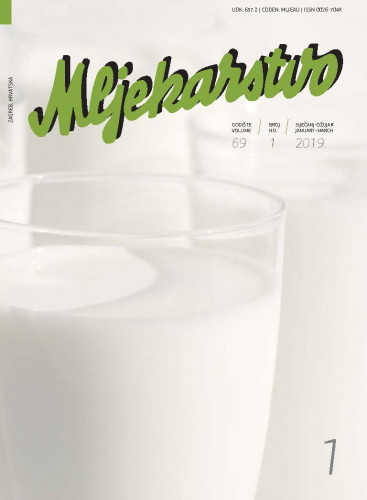The objective of this study was to determine the effect of composition and proteolysis on textural characteristics of Croatian cheese in a lamb skin sack (Sir iz mišine) over a ripening period of 30 days. Ten ovine milk cheese batches were manufactured according to the traditional manufacturing procedures. The content of total solids, fat, proteins (P<0.05) and salt (P<0.01) significantly increased during cheese ripening. Results of this research showed that αs1-casein hydrolysed more rapid in comparison to the β-casein. An extensive and significant (P<0.05) degradation of αs1-casein was accompanied by significant (P<0.05) accumulation of αs1-I-casein. Although β-casein degradation occurred in cheese to a moderate degree, these changes were not statistically significant. However, the level of γ-casein increased significantly (P<0.01) in cheese throughout ripening. Due to the extensive proteolysis, both TCA-SN (P<0.01) and WSN (P<0.05) significantly increased throughout ripening time. Results showed significant decrease (P<0.05) in hardness, cohesiveness and springiness during cheese ripening along with progress of proteolysis. Weakening effect of caseinolysis predominated over the strengthening effect of moisture loss in the texture development of cheese, which could be attributed to the specific conditions in the animal skin sack during ripening.; Cilj ovog istraživanja bio je utvrditi promjene fizikalno-kemijskih, proteolitičkih i teksturnih značajki sira iz mišine tijekom zrenja od 30 dana. Prema tradicionalnom postupku proizvodnje, proizvedeno je 10 šarži sira. Udio suhe tvari, masti, proteina (P<0.05) i soli (P<0.01) se značajno povećavao tijekom zrenja sira. Rezultati istraživanja su pokazali bržu razgradnju αs1 kazeina u odnosu na β-kazein. Opsežna i značajna (P<0.05) razgradnja αs1 kazeina je popraćena značajnim (P<0.05) povećanjem udjela αs1-I-kazeina. Iako je utvrđena umjerena razgradnja β-kazeina u siru, statistički značajne razlike nisu utvrđene. Međutim, udio γ-kazeina se značajno (P<0,01) povećavao tijekom zrenja sira. Kao posljedica intenzivne proteolize, došlo je do značajnog povećanja udjela TCA-SN (P<0,01) i WSN (P<0,05). Rezultati su pokazali značajno (P<0,05) smanjenje čvrstoće, kohezivnosti i elastičnosti tijekom zrenja sira odnosno s progresom proteolize. Učinak omekšavanja sira kao posljedica kazeinolize nadvladao je učinak učvršćivanja sira kao posljedica gubitka vlage, što se može pripisati specifičnim uvjetima u mišini tijekom zrenja sira.
Sažetak

 Mljekarstvo.com : časopis za unaprjeđenje proizvodnje i prerade mlijeka 69,1(2019) / glavna i odgovorna urednica, editor in chief Rajka Božanić.
Mljekarstvo.com : časopis za unaprjeđenje proizvodnje i prerade mlijeka 69,1(2019) / glavna i odgovorna urednica, editor in chief Rajka Božanić.